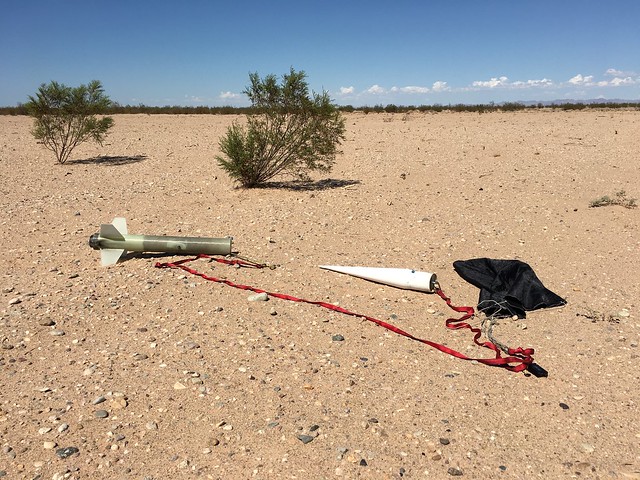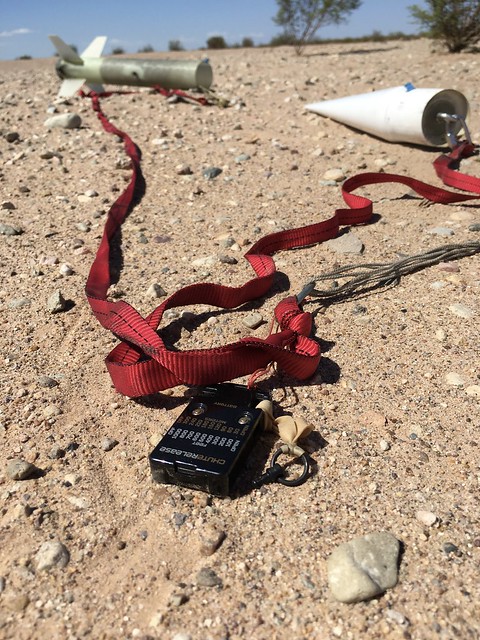I didn't feel like packing that morning but, rather than shirking all responsibility, I elected to throw the trusty
2.6" Madcow Nike Smoke and minimally supportive gear in the car. I also had that
CTI/AMW 542I297 Skidmark that failed to fire in DRM mark II at LDRS so that was handy for this robust, 38mm-motor-mount beastie. Finally, and most importantly, I wanted to test the
Jolly Logic Chute Release gifted by my parents in September. That site link covers the device thoroughly but this small, non-pyrotechnic parachute tether will now figure prominently in my electronics arsenal. I somehow failed to secure liftoff video or photos but will attest to the perfection of the flight and single-volume, dual-deploy recovery. Here are the
other photos I captured that day as already shared with the Tripoli SD email distribution. Oh and it's quite a rare bonus that I missed landing on the runway by about 8 feet this time:


I think I set the device for 500' to unbind the parachute but it looked more like 200' to me. Next time I'll try 700-800' and see how that looks. Note that Holtville is very close to sea level so this wasn't an
MSL/AGL disagreement. In summary:
git one and git 'er done, 'Merica!



2 comments:
Nice landing. Sir, what is a single-volume, dual-deploy recovery?
-Doug
Hi, Doug.
Dual-deploy typically means that a small drogue parachute is ejected from one airframe compartment at apogee then a larger main 'chute pops at low altitude from a separate compartment to reduce drift. Single-volume dual-deploy means that a tethered (reefed) main parachute is ejected at apogee and the tether binding the main is released at low altitude. So this still minimizes drift but with a much simpler rocket design. Win:win.
Promote synergy and thanks for reading, Doug.
Post a Comment